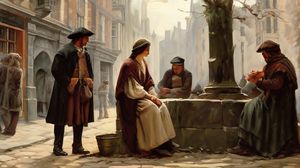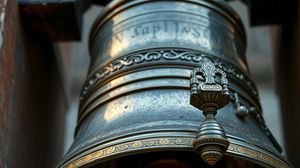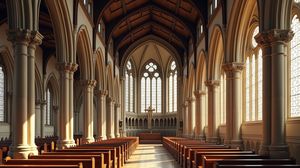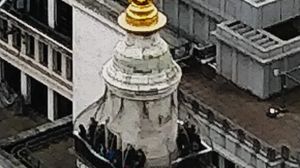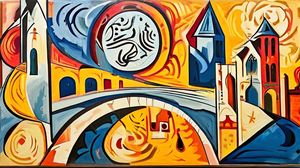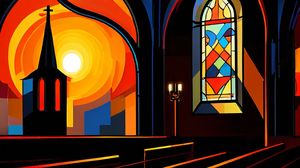
St. Stephen Walbrook, an architectural gem in the heart of the City of London, holds an illustrious place in the world of church design. Rebuilt by Sir Christopher Wren following the Great Fire of London, it stands as an exceptional example of Wren's mastery in ecclesiastical architecture. This beautiful, domed church is often considered a smaller prototype of St. Paul's Cathedral, showcasing Wren's innovative approach to space and structure.
Visitors to St. Stephen Walbrook will find themselves standing beneath one of the most impressive church domes in the city. Its dome, suspended on Corinthian columns, is not only a structural marvel but also creates a feeling of grandeur and serenity. This ingenious design facilitated Wren's vision of bringing a sense of divine space and light to the heart of the city.
A notable feature within St. Stephen Walbrook is the central altar, crafted by renowned sculptor Henry Moore. Installed in 1978, this striking circular stone altar adds a modern touch to the historic setting. This unconventional design choice stirred quite a debate upon its installation but has since been embraced as an integral aspect of the church's unique character.
The church is dedicated to Saint Stephen, who is recognized as the first Christian martyr, lending spiritual depth to its historical and architectural significance. This deep-rooted connection to early Christian history is subtly woven into the very fabric of the church's traditions and community.
St. Stephen Walbrook boasts a rich history as one of the earliest sites for weekly lunchtime services in London. These gatherings reflect its longstanding commitment to serving as a spiritual haven amidst the hustle of the city's financial district, attracting a diverse cross-section of worshippers and visitors alike.
Interestingly, the church's location also marks the "Walbrook", a subterranean river after which it is named. The river runs beneath the streets of the City of London, hidden from view, yet steeped in history. This bit of hydrological history adds to the intriguing mix of time and place found at St. Stephen Walbrook.

Making the Most of Your Visit:
Make sure to look up as soon as you enter—Wren's dome is a spectacular sight. The interplay of light and shadow under the dome changes throughout the day, so every visit is different.
Take some time to admire the Henry Moore altar. It's a fascinating piece that might divide opinions, but understanding its story and the debates it stirred will give you a deeper appreciation of the church's modern and historical blend.
If possible, attend one of the lunchtime services during the week. It's not only a chance to experience a sense of peace in the bustling city but also to feel like a part of its living history and community.
Pay a visit to the church's undercroft. The atmosphere is quite different from the main space above and offers insight into the church's construction and use through the ages.
Remember the overlooked ‘Walbrook' river that runs beneath. Though you won't be able to see it, just knowing about this hidden waterway adds an additional layer of intrigue to your visit.

Visiting Times & Costs:
Opening Hours:
St. Stephen Walbrook is typically open to the public on weekdays. The usual visiting hours are Monday to Friday from 10:00 AM to 4:00 PM. However, it is recommended to check in advance as times may vary, especially around public holidays or for special events. The church is closed to the public on weekends except for specific events or services.
Entry Fees:
There is no entrance fee to visit St. Stephen Walbrook. Visitors are welcome to make a voluntary donation to help with the church's upkeep and maintenance.
Accessibility:
St. Stephen Walbrook is committed to being accessible to all visitors. The church has provisions for step-free access. However, some older sections may present challenges, and it's advised to inquire ahead if you have specific accessibility needs.

Address & Map:

Nearby:



